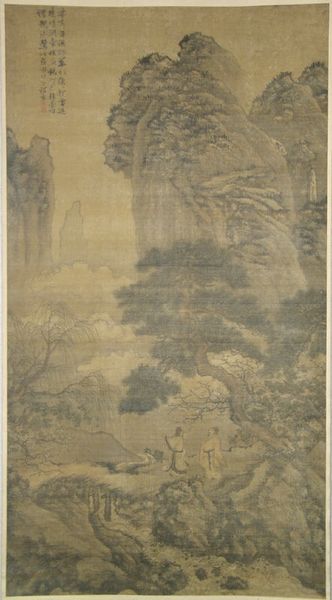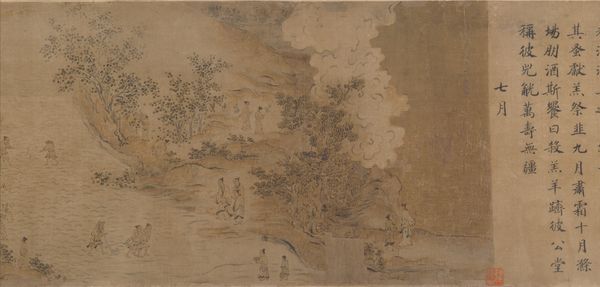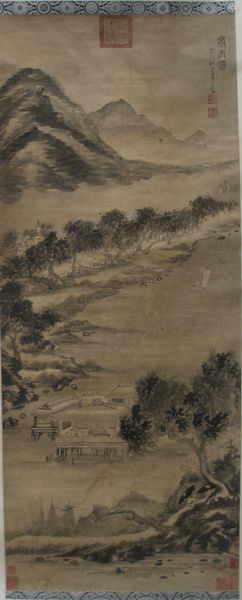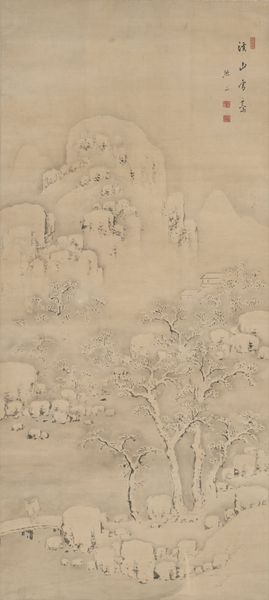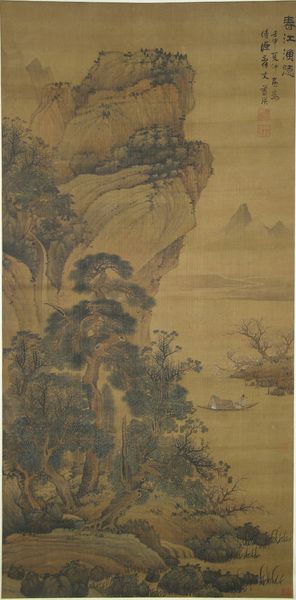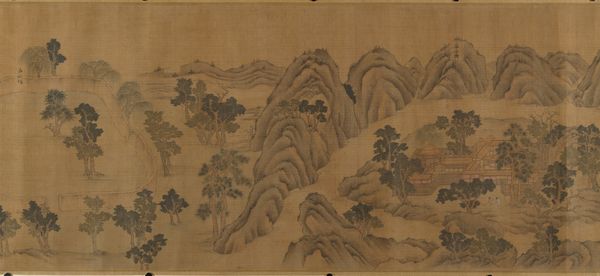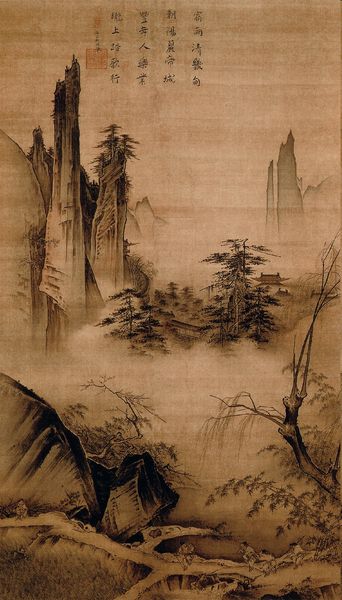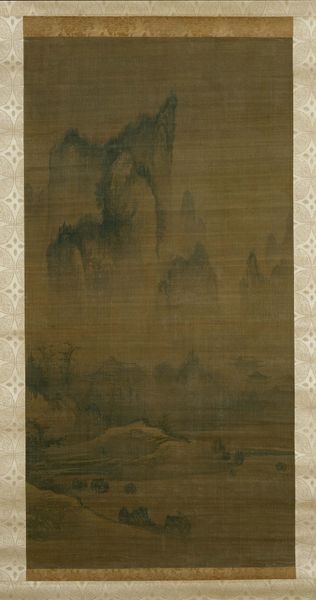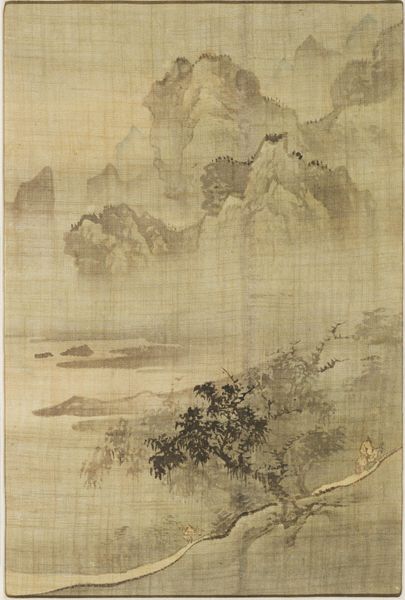
drawing, painting, ink
#
drawing
#
painting
#
asian-art
#
landscape
#
classical-realism
#
charcoal drawing
#
figuration
#
ink
#
pencil drawing
#
realism
Copyright: Public domain
Curator: This ink drawing, named "Landscape of Pine Valley," presents a somewhat monochromatic, contemplative panorama. What are your initial impressions? Editor: My immediate reaction is to think about the physicality involved in creating this tiered vista; consider the artist, Chen Hongshou, maneuvering his brush across what looks like absorbent paper. I am interested in the source of the ink, its preparation, and the laboriousness of depicting a landscape like this. Curator: Indeed. Notice how Hongshou uses the ink not merely as color but as structure itself, defining forms and delineating planes. The interplay between void and mass orchestrates a certain spatial depth. Consider how the mountains ascend into an ambiguous aerial perspective; each is sharply defined, while their arrangement forms a rhythmic progression. Editor: That is well observed, though I’m more interested in what’s below. If we examine the clusters of figures at the painting’s base, the question is, where did Hongshou source the pigments to capture this valley? Were they mineral-based? Plant-derived? These technical questions unveil a process tied to trade, geography, and the specific locale itself. Curator: But doesn't the landscape itself transcend geographical specificity? It feels archetypal, distilled into its essential elements—mountain, tree, figure—creating a stage for introspection. Even its coloration amplifies this. The sepia tones lend an air of quiet remove. Editor: It’s that remove that interests me. By examining his methodology, aren’t we better positioned to understand his intentions, his connection to natural resources? He didn’t merely conceive the scene; he extracted and manipulated raw materials, shaping an object of utility—and considerable beauty. Curator: Perhaps it is enough to simply consider the visual harmony created. Look at the contrast, the texture created by the interplay of line and shading. It creates a complex, intriguing composition on the surface level. Editor: I suppose my interest will always drift toward production. By focusing on his material choices and technical prowess, we move away from the rarefied "artist's vision" to explore tangible links that bridge past and present. Curator: Perhaps, but the strength of formal composition will continue to intrigue audiences. Editor: Absolutely. And considering its means of construction is yet another perspective we can consider.
Comments
No comments
Be the first to comment and join the conversation on the ultimate creative platform.

